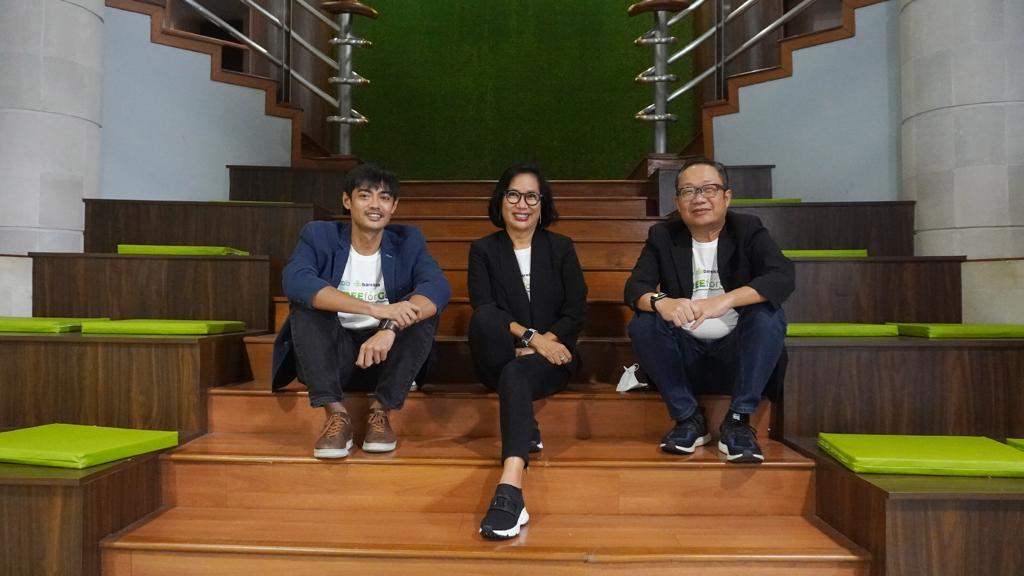Singapore tech unicorn Grab is determined to redesign Southeast Asia’s underserved financial markets, with the head of its finance unit saying now is a “once in a lifetime” opportunity to drive financial inclusion in the region.
In a webinar on the future of finance organized by Nikkei on Thursday, Reuben Lai, senior managing director of Grab Financial Group, said the company was “ready to drive financial inclusion across Southeast Asia” through its digital-based services and to create “economic empowerment for millions of Southeast Asians.”
Finance is one of Grab’s core businesses along with ride-hailing and food delivery, and it is expected to be a key growth driver for the company after its US listing, which could happen as soon as early December. Currently it offers the GrabPay e-wallet, insurance, and wealth management among other services, targeting young white-collar workers, Grab’s ride-hailing drivers, and small- and medium-sized enterprises—in which Lai said the company has discovered “a huge under-met need.”
For financial inclusion, or the ability of individuals and businesses to access financial services that meet their needs, Lai said one key driver will be digital banking. Grab has already won a digital banking license in Singapore through a joint venture with Singapore Telecommunications and is preparing for the launch, expected early next year. The new banking company has already hired 200 people, Lai said.
Southeast Asia’s traditional banks such as Singapore’s DBS Group Holdings are also investing heavily in the digital space. But Lai said he does not see these banks as competition “at all.”
“We see huge investments [by traditional banks] in consumer experiences across the region. That’s great for the consumers, but our focus is really on the underserved,” he said. “For us, it is the six out of ten who are underserved by banks, the nine out of ten who don’t have access to credit cards—all across Southeast Asia. That’s our target segment.”
Grab has also applied for a digital bank license in Malaysia and is looking for digital bank opportunities in the rest of the region.
“We continue to look across Southeast Asia for other exciting opportunities, to reinvent banking,” he said. “The journey is so exciting. And yet, it’s so far ahead. For me, this is such an exciting role I have, and all my teammates share the same enthusiasm—once in a lifetime to bring financial inclusion at scale across Southeast Asia.”
He said Grab has learned the ins and outs of the financial business from existing partners such as Japan’s Credit Saison and Mitsubishi UFJ Financial Group, as well as Chinese insurance group ZhongAn. For example, through a partnership with Thailand’s Bank of Ayudhya, an MUFG group bank, Grab looked at “how to serve the merchants better through joint credit scoring,” he said.
Another expected source of growth will be the “buy now, pay later” service, which enables customers to buy items, without interest payments. Grab receives commission from merchants.
Grab launched its buy now, pay later function in late 2020, targeting people who do not have a credit card. In a separate interview, head of GrabPay and GrabRewards Chris Yeo told Nikkei that the company currently operates this service in Singapore and Malaysia and will roll it out in other markets in the region next year.
Yet Grab’s financial business is still making losses. The segment’s revenue for the July-September quarter was USD 14 million, while its EBITDA (earnings before interest, tax, depreciation, and amortization) was negative USD 76 million, suggesting huge costs for scaling the business.
Some of Grab’s products, such as micro wealth management, allow users to make investments from just one Singapore dollar (USD 0.74). Asked in the webinar whether such a business model of selling small products is sustainable, Lai said his company could keep its cost base very low by using automation and technology to scale such business for its target customers.
“Once you open up this addressable market, we believe that the size of the revenue opportunity is very significant, in addition to the chance to do good for Southeast Asia,” he said. “We’re working hard at it, and hopefully, over the next five to ten years, we see banking and financial services redesign and redefine Southeast Asia.”
This article first appeared on Nikkei Asia. It’s republished here as part of 36Kr’s ongoing partnership with Nikkei.

